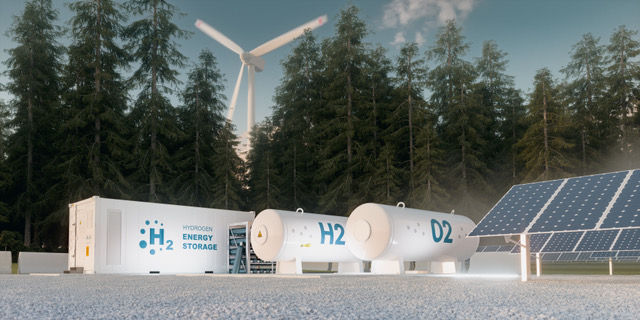Our sister company 4CleanTech's EM Mag Article: Hydrogen and Combined Heat and Power Units (CHPs)
- Guenther J. Schulz
- Feb 26, 2022
- 2 min read
Even if the initial euphoria may have somewhat subsided by now, the use of hydrogen as a future energy source is a very important factor on the road to climate neutrality. In Europe, energy production and the use of energy account for approximately 75% of greenhouse emissions. In this context, it is not surprising that CHP technology with hydrogen as a fuel is naturally becoming the focus of interest alongside fuel cells.
What is so special about hydrogen?
One of the biggest advantages of hydrogen is that there are almost no CO2 emissions when hydrogen is burned. Equally important, hydrogen is particularly well suited as a storage medium for surplus energy from solar or wind power plants. Bound to gas, electricity from renewable energy sources can be made usable in this way, both in a time-delayed and transportable manner.
How can hydrogen be used by the CHP unit?
In general, there are two options to choose from to operate a hydrogen CHP: as a pure hydrogen CHP or as a dual-fuel natural gas hydrogen CHP. The difference between the two types of operation is that a pure hydrogen CHP, as the name suggests, only uses hydrogen as a fuel. A dual-fuel CHP, on the other hand, can run on both hydrogen and natural gas separately, or a mixture of the two fuels. For both options, it is necessary to technically convert the CHP.
What technical effort is required for the conversion?
The pure hydrogen CHP, as well as the dual-fuel CHP, require a technical modification of the existing CHP technology. To be able to handle the use of hydrogen as a fuel, the valves, seals, etc. of the CHP unit, for example, must be of a different or more robust design.
In addition, the engine in a hydrogen CHP needs a different control software. Furthermore, the combustion of hydrogen or a natural gas-hydrogen mixture requires special sensor technology to optimise engine control. Finally, turbocharging in the turbocharger and the pistons must be adapted, and specially made hydrogen injection valves must be installed.
These are modifications of existing gas CHPs, which of course make the production of hydrogen CHPs costly. There is not yet a market demand for hydrogen CHPs that would allow the CHPs to be mass-produced directly for this usage.
Why has a hydrogen boom not occurred yet?
The answer is as succinct as it is simple. Hydrogen, especially green hydrogen from surplus renewable energy is expensive and the price of electricity from this energy source would be higher than electricity from other sources. Large sums of money are currently being made available worldwide for research projects on the use of hydrogen, but the decisive step has not been taken yet. To make hydrogen marketable and to reduce the cost of the technology, an incentive program will be needed for green hydrogen to be produced, as it was necessary for other renewable energy sources like solar or wind.
The move away from fossil fuels such as coal, oil, and natural gas can only succeed if a market for green hydrogen is created through an incentive program like the feed-in tariff for solar energy.

A model for the future: hydrogen is generated from surplus renewable energy, which can be stored and used to generate electricity at a later date


